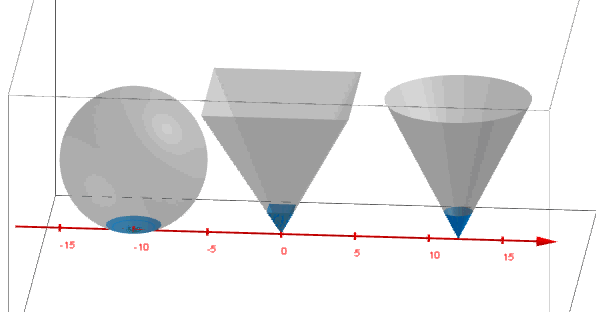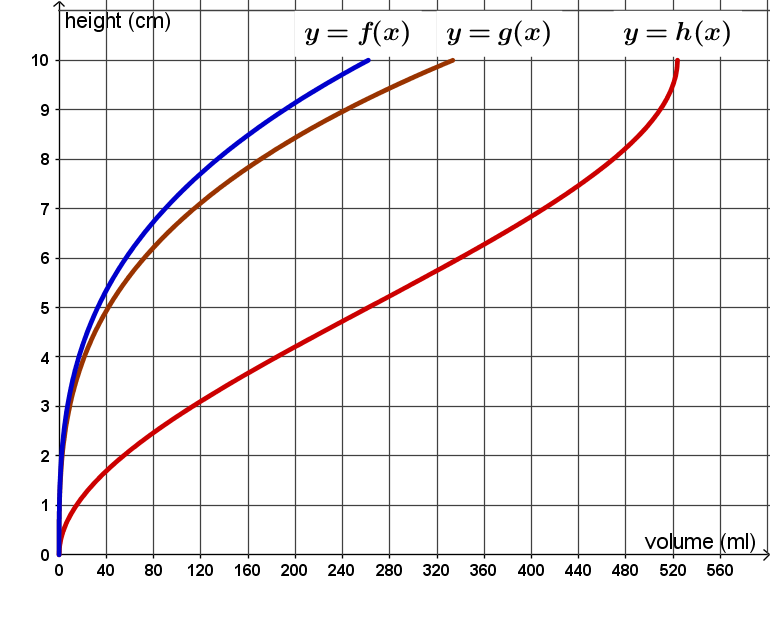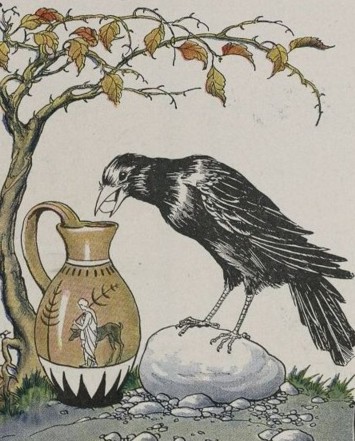Monday 11th to Friday 15th of April was certainly a week of great action. 10 students from Finland and 9 from Spain had come to visit us, as participants to the Erasmus+ program “EL ESPAÑOL, PASAPORTE ENTRE CULTURAS”. We, being the hosts, had arranged quite a lot of events to welcome them.
On this frame, an experimental approach to linear functions was planned for Wednesday 13th of April 2016. Right after the morning assembly, all students of A3 Class, together with our visitors, arranged themselves to the basketball court to get action.
|
The crow and the pitcher
Then an idea came to him. Picking up some small pebbles, he dropped them into the pitcher one by one. With each pebble the water rose a little higher until at last it was near enough so he could drink. Moral: Necessity is the mother of invention. |
The lesson was based on the fable “The crow and the pitcher” in which a crow raised the water level in a pitcher by throwing inside small pebbles. Students were instructed to repeat the task by throwing marbles inside a pluviometer. They should raise the water level from 100 mm to 120 mm. As they added the marbles one by one, they kept notes for the water level and then plotted it as a function of the number of the marbles. This function was linear and its explicit formula was to be found. They all did so well in this task!


In the second part, the pluviometer was replaced by other pots: a sphere, a square pyramid and a cone (stand on their peaks) and the marbles by small amounts of water (same for all three solids), injected to them. Again, students would focus on the water levels, which were not linear functions of the water amount injected, as indicated from the three graphs plotted on their worksheet. But which graph corresponds to which solid? Students managed to unravel this riddle. Can you?
- The crow and the pitcher fable
- Activities ("The crow and the pitcher" and "The three curves")
- Team work: completed worksheets
- GeoGebra files (cone-pyramid-ball.ggb and demonstration.ggb)
- The Crow and the Pitcher: Investigating Linear Functions Using a Literature-Based Model
- Aesopica: Aesop's fades - The crow and the pitcher
- ABC Science: Crows 'clever' as human seven-year-old
This site is mastered by Irini Perissinaki iriniper[ατ]sch.gr
Background image by 123RF
 OR
OR



 Here we are, at the basketball court yard,
Here we are, at the basketball court yard,  and perform an experiment with a tube
and perform an experiment with a tube After dropping 12 marbles inside.
After dropping 12 marbles inside. We got a line too!
We got a line too! A few more questions to fill.
A few more questions to fill. Short discussion and we get
Short discussion and we get Three students to fill three pots
Three students to fill three pots  In a spell of dry weather, when the Birds could find very little to drink, a thirsty Crow found a pitcher with a little water in it. But the pitcher was high and had a narrow neck, and no matter how he tried, the Crow could not reach the water. The poor thing felt as if he must die of thirst.
In a spell of dry weather, when the Birds could find very little to drink, a thirsty Crow found a pitcher with a little water in it. But the pitcher was high and had a narrow neck, and no matter how he tried, the Crow could not reach the water. The poor thing felt as if he must die of thirst.